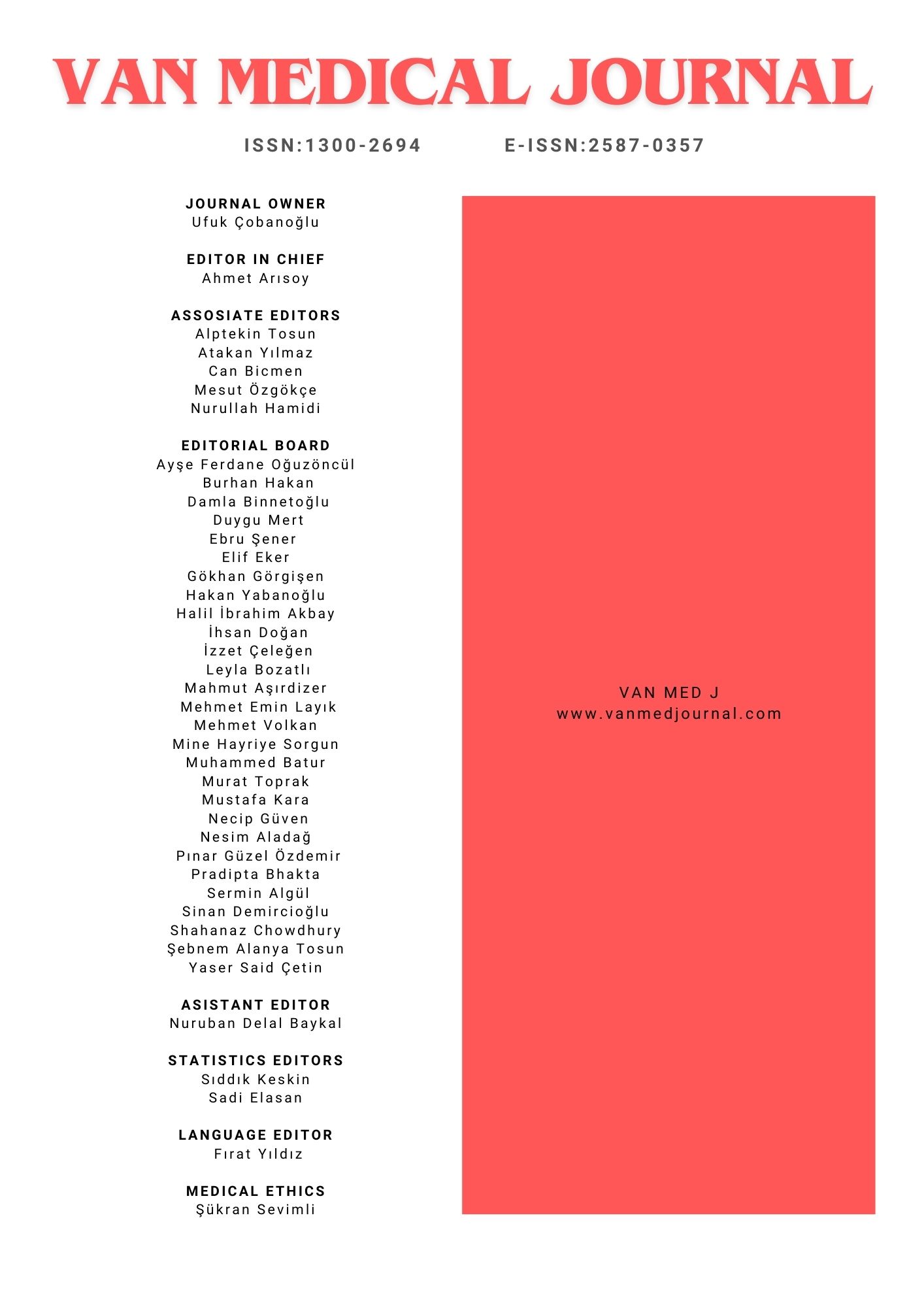Demographic And Clinical Features Of Vernal Keratoconjunctivitis in a Hot Region: A Hospital-Based Study
Seyfettin ErdemBismil State HospitalINTRODUCTION: We aimed to to evaluate the demographics and clinical features of patients with vernal keratoconjunctivitis who have presented to our hospital which serves the hottest and the driest climate region in our country and also the severity of the disease.
METHODS: We retrospectively examined the examination findings of 143 patients diagnosed with vernal keratoconjunctivitis in the Bismil state hospital ophthalmology polyclinic between April 2018 and September 2018.
RESULTS: Of the patients included in the study, 106 (74.1%) were male and 37 (25.9%) were female with a mean age of 8.7 ± 3.9 (3–21) years. The disease most frequently affected patients aged 6–10 years (59 patients, 41.2%). Mixed type (81 patients, 56.6%) was the most common type, followed by limbal type (34 patients, 23.8%) and palpaberal type (28 patients, 19.6%). The most common symptoms were itching (100%), redness (70.6%), photophobia (57.3%) and watering (48.9%). The most common clinical findings included conjunctival congestion (67.8%), upper palpebral papilla (65.2%) and limbal papilla (40.5%). Mild severe type most commonly affected males (50 patients, 47.2%), while moderate type (62.2%) was seen more frequently in females. Only 7 patients (4.8%) had an allergic family history.
DISCUSSION AND CONCLUSION: Vernal keratoconjunctivitis is one of the main cause of ocular morbidity with different types of involvement and severity in our region especially in childhood. Hence, Patients with vernal keratoconjunctivitis should be monitored and treated during seasonal exacerbations to prevent possible complications of this disease especially in hot and dry areas such as our region.
Sıcak Bir Bölgede Vernal Keratokonjonktivitin Demografik Ve Klinik Özellikleri: Hastane Bazlı Bir Çalışma
Seyfettin ErdemBismil Devlet HastanesiGİRİŞ ve AMAÇ: Ülkemizin en sıcak kuru iklim bölgesinde hizmet sunan hastanemize başvuran vernal keratokonjonktivitli hastaların demografik ve klinik özellikleri ile hastalığın şiddetini değerlendirmeyi amaçladık.
YÖNTEM ve GEREÇLER: Nisan 2018 ve Eylül 2018 tarihleri arasında Bismil Devlet Hastanesi Göz polikliniğinde vernal keratokonjonktivit tanısı konmuş olan 143 hastanın muayene bulgularını retrospektif olarak inceledik.
BULGULAR: Çalışmaya alınan hastaların 106 (% 74.1)’sı erkek ve 37 (% 25.9)’si ise kadındı. Ortalama yaş 8.7±3.9 (3–21) yıl idi. Hastalık en sık olarak 6-10 yaş aralığında (59 hasta, % 41.2) görüldü. En sık olarak miks tip (81 hasta, % 56.6) görülürken, daha az sıklıkta ise limbal tip (34 hasta, % 23.8) ve palpaberal tip (28 hasta, % 19.6) görüldü. En sik görülen semptomlar ise sırasıyla kaşıntı (% 100), kızarıklık (% 70.6), fotofobi (% 57.3) ve sulanma (% 48.9) olarak saptanırken, en sık görülen klinik bulgular ise konjonktival konjesyon (% 67.8), üst palpebral papilla (% 65.2) ve limbal papilla (% 40.5) olarak saptandı. Erkeklerde en sık olarak hafif şiddetli form görülürken (50 hasta, % 47.2), kadınlarda ise orta şiddetli form (% 62.2) daha sık görüldü. Sadece 7 hastada (4.8 %) alerjik aile öyküsü mevcuttu.
TARTIŞMA ve SONUÇ: Vernal keratokonjonktivit, bölgemizde özellikle çocukluk çağında farklı tutulum tipi ve şiddeti ile oküler morbiditenin ana nedenlerinden biridir. Bu nedenle, Vernal keratokonjonktivitli hastalar, özellikle bölgemiz gibi sıcak ve kuru bölgelerde, bu hastalığın olası komplikasyonlarını önlemek için mevsimsel alevlenmeler boyunca izlenmeli ve tedavi edilmelidir.
Corresponding Author: Seyfettin Erdem, Türkiye
Manuscript Language: English

